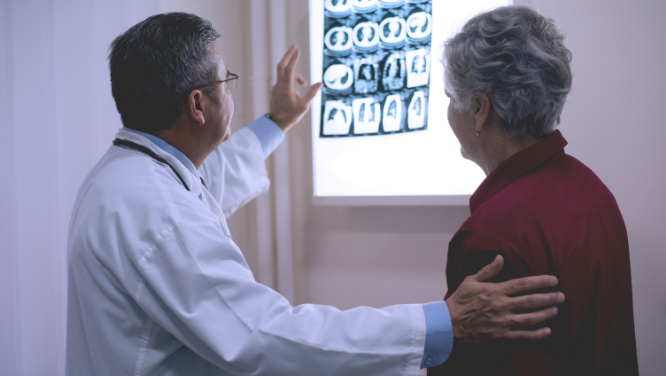Pediatric Bone Marrow Stem Cell Transplant Center
Pediatric Bone Marrow Stem Cell Transplant Center
At the Anadolu Health Center Pediatric Bone Marrow Transplant Center, childhood diseases requiring transplantation are treated with a multidisciplinary approach by expert teams and advanced technology.
Diseases Treated at the Pediatric Bone Marrow Transplant Center
The center performs bone marrow stem cell transplants for patients aged 0-18 who require transplantation, including those with malignant and non-malignant conditions. Treatments include benign diseases such as hemoglobinopathies (thalassemia major, sickle cell anemia), aplastic anemias, immunodeficiencies, and metabolic disorders, as well as malignant diseases including leukemias and certain solid tumors.
At the Pediatric Bone Marrow Transplant Center, transplants are performed either using the patient's own cells or from related or unrelated donors, depending on the type of disease. For this purpose, tissue groups known as “HLA” are compared between the patient and donor to choose the most compatible donor. Each patient is evaluated individually, and the most suitable donors are selected based on the disease group and its severity.
What kind of team is involved at the center?
Our patients are served by a multidisciplinary team. In addition to a Pediatric Hematology and Oncology Specialist and a Pediatric Health and Diseases Specialist experienced in bone marrow stem cell transplantation, the team includes specialists in Pediatric Infectious Diseases, Pediatric Pulmonology, Pediatric Nephrology, Pediatric Cardiology, Pediatric Gastroenterology, and Pediatric Intensive Care. The team also includes 14 experienced nurses specializing in bone marrow transplantation.
What are the types of bone marrow transplants?
There are two types of bone marrow stem cell transplants: autologous and allogeneic. In autologous bone marrow transplantation, stem cells are collected from the patient’s own body. After undergoing chemotherapy, the patient’s stem cells are collected when the bone marrow starts producing new cells, usually within 7-14 days. These cells are then returned to the patient after high-dose chemotherapy tailored to the child’s disease.
How are stem cells collected for bone marrow transplantation?
Autologous stem cells are collected from peripheral blood, usually using an apheresis device in a clean room without the need for anesthesia. In an autologous transplant, the cells are collected from the patient and returned to the same patient, eliminating tissue compatibility issues. Autologous transplants are also used for conditions like neuroblastoma, Hodgkin lymphoma, Ewing sarcoma, germ cell tumors, and some brain tumors.
In allogeneic bone marrow transplantation, stem cells are collected from a compatible donor. Preferred donors are usually siblings or other family members, but unrelated donors from within the country or abroad, or cord blood, may also be used.
Is there a risk of disease relapse after treatment?
While there is a risk in the first 5 years, pediatric hematologic cancers are generally treated successfully in 75-80% of cases, and immunodeficiencies in 80-90% of cases, with complete remission achieved. Success rates in some diseases are very high; for example, in severe combined immunodeficiencies, a 90% success rate can be achieved.
What does the patient experience at the center?
The patient usually starts with an outpatient consultation. Necessary tests are ordered, and a decision is made in the stem cell transplant council about whether or not to proceed with the transplant. If an allogeneic transplant is decided, tissue compatibility is checked, and once a suitable donor is found, preparations are made. Blood tests are conducted, focusing particularly on infection parameters. After the results are discussed with relevant departments, the patient is admitted to the Bone Marrow Transplant Center. In the center, where infection control is highly stringent, only one accompanying person is allowed with the child, and visitors are not permitted. Children can bathe daily and eat their meals in negative pressure isolation rooms.
How long does the patient stay in the hospital before the transplant?
Before the transplant, the patient stays at the Bone Marrow Transplant Center for approximately 7-10 days. Preparations are made, and necessary medications (chemotherapy) are started. The chemotherapy almost completely eradicates the cells in the bone marrow. This period is characterized by a high risk of infections, requiring careful isolation.
How is the bone marrow (stem cell) transplant performed?
In allogeneic transplants, stem cells are collected from another donor. During the transplant process, stem cells are collected from the donor in the operating room, or if peripheral stem cell transplantation is performed, they are collected using an apheresis device. Stem cell products may also be obtained from stem cell banks, sometimes from within or outside the country.
The collected stem cell product is transplanted into the patient via a central venous catheter, similar to receiving a blood transfusion. In autologous transplants, the previously collected and frozen product is thawed under appropriate conditions and then returned to the patient through a catheter.
What is the post-transplant process like for the patient?
After the transplant, it is expected that the bone marrow will start producing new stem cells within 2-3 weeks and sufficient blood components within 28 days. The patient typically stays in the isolated unit for about 1 month, receiving protective measures against infections and preventive medications for various infections, including fungal infections. White blood cells (lymphocytes and neutrophils) usually appear after the second week, and platelet counts are expected to appear by the third week. Once all blood components are produced healthily by the bone marrow and all blood values return to normal, the patient prepares for discharge.
What should discharged patients and families pay attention to?
To avoid infections, it is recommended that the patient does not attend school for at least six months, or even up to a year. During this period, all required vaccinations are administered, regular check-ups are attended, and prescribed medications are taken. Initially, the patient will have frequent follow-up visits. After weekly and monthly check-ups, the child will be seen every 6 months based on their health condition. After one year, the patient can return to normal activities, with annual follow-ups still required.
Which vaccinations do children receive?
Childhood vaccinations are considered as if they were not given and a new vaccination schedule is created, with all vaccinations being repeated except for the BCG vaccine.
What symptoms should be watched for after the transplant, and when should the patient be referred to the hospital?
It is important to seek medical attention if symptoms such as rashes, diarrhea, lung problems, or jaundice occur. Fever is also an important symptom to consider.
What are common symptoms of hematologic cancers?
Symptoms such as sudden fatigue, weakness, pallor, bruises in various parts of the body, jaundice, excessive night sweating, weight loss, and lumps in the abdomen, neck, or armpits in an otherwise healthy child may indicate hematologic cancers such as lymphoma or leukemia. It is crucial to pay attention to these symptoms and consult a physician.
Pediatric Hematology and Oncology
Prof. Savaş Kansoy

We listen to your opinions and suggestions to further enhance our service quality.

You can fill out the form to get a second doctor's opinion on the results of your tests, the diagnosis of your illness, and the treatment options we offer you.

You can receive the healthcare services you need at your home. Please fill out the form for home healthcare services.
Featured Articles
- 6 Nutrition Tips for Those Who Fast
- What is Disease X (Virus X)?
- How Does Cancer Form?
- What is an Ovarian Cyst?
- What is Cervical Cancer?
- What Are the Symptoms and Treatment Methods of Testicular Cancer?
- Symptoms, Diagnosis, and Treatment Process of Bladder Cancer
- Liver Cancer
- What is Stomach Cancer? What are Its Symptoms and Treatment?
- Thyroid: What is it, Symptoms, Diagnosis, and Treatment






